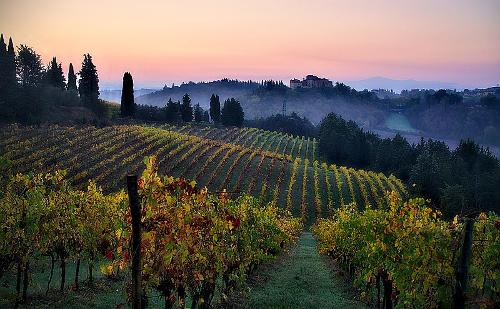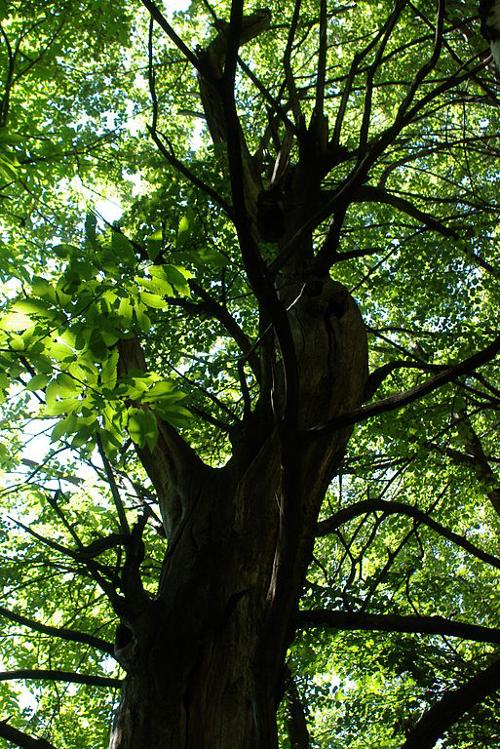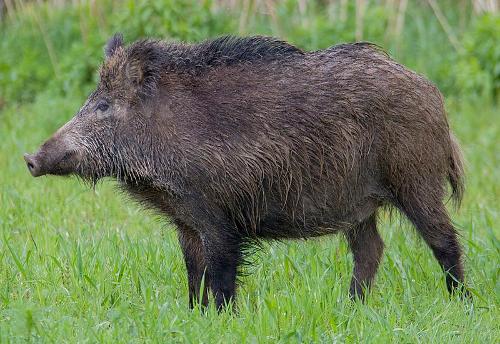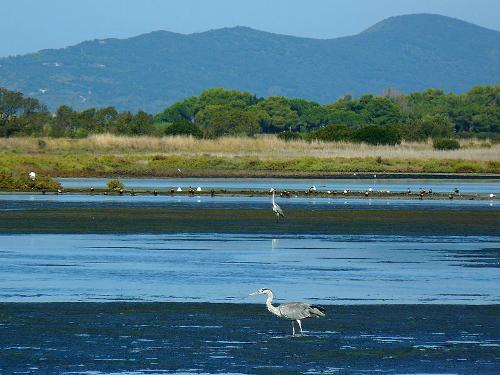TUSCANY
Plants and Animals

Plants and Animals
Popular destinations ITALY
| Campania | Lombardy | Sardinia |
| Sicily | Tuscany | Umbria |
| Veneto |
Plants and Animals
Plants
Tuscany has a very varied natural vegetation, from subtropical vegetation in the southern coastal areas and on the archipelago of islands to alpine flora high up in the Apennines.
 Vegetation TuscanyPhoto: Thomas Fabiab CC 3.0 no changes made
Vegetation TuscanyPhoto: Thomas Fabiab CC 3.0 no changes made
The Tuscan landscape is dominated by three tree species, the cypress, the olive tree and the vine. The slender cypress grows 10-15 metres high and is very efficient as a windbreak for agricultural activities. The olive tree produces 30-80 kg of olives annually. Of the nearly 250 species of olive trees worldwide, about fifty are found in Tuscany.
Along the coast and in the Maremma, the evergreen "macchia" or "maquis" predominates, with holm oak, cork oak, cistus rose, juniper, mouse-horned maple, hawthorn, broom, myrtle, heather, affodil, gorse, yellow poppy, laurel trees and rosemary. The coastal region is also the area with extensive pine forests, especially maritime pine and stone pine. The marshes and ponds in this region are partly covered with dense reed beds and water lilies.
 Chestnut Forest, TuscanyPhoto: Yzmo CC 3.0 no changes made
Chestnut Forest, TuscanyPhoto: Yzmo CC 3.0 no changes made
Chestnut forests can be found throughout Tuscany, beech and silver fir grow in the Apennines, the Casentino and on Monte Amiata between 1000 and 1700 metres. Magnificent fir forests can be found in the area of Camaldoli, Vallombrosa and Abetone.
Above the tree line in the Apennines, alpine flora related vegetation can be found, e.g. the alpine rose. Chestnut trees, agaves and prickly pears are common on the island of Elba.
Animals
Small numbers of wolves live in the Apennines, near the border with Umbria. Wild boars are especially common in the macchia-covered Maremma and in the woods of the Chianti region. Also roe deer and fallow deer are quite common here, as well as the massive Maremma cattle and the small Maremma horse. Maremma is also the habitat of smaller mammals such as foxes, stone martens, badgers, weasels, porcupines, martens, polecats and the somewhat rarer otter and wildcat. Wild goats are remarkably only found on the islet of Montecristo.
 Wild Boar, TuscanyPhoto: Jerzy Strzelecki CC 4.0 no changes made
Wild Boar, TuscanyPhoto: Jerzy Strzelecki CC 4.0 no changes made
The number of bird species is very varied, partly because Tuscany is on the route of the great bird migration. Of the native birds, the partridge is the most common. The pheasant is also very common, but not indigenous. Migratory birds are numerous, including songbirds (thrush, swallow, magpie, nightingale, kingfisher), birds of prey (royal eagle, sparrowhawk, falcon, buzzard, kite, owl), swimming birds (cormorant, mallard, coot, gull, wild goose) and wading birds (grey heron, snipe, crane, little egret, stork). These migratory birds can be seen frequently, especially between November and March.
 Birdliife at Laguna Orbetello, TuscanyPhoto: GioFon CC 3.0 no changes made
Birdliife at Laguna Orbetello, TuscanyPhoto: GioFon CC 3.0 no changes made
The Orbetello Lagoon is home to the only breeding colony of flamingos on the Italian mainland.
Among the reptiles, the green lizard and the poisonous adder are the most well-known. In some places, tortoises can be found.
On Elba, martens can be found and, around Montecristo, monk seals. Many migratory birds rest on Elba from their journey from Europe to Africa. The Adouins gull nests in Capraia, Giglio and Pianosa.
Sources
Aigner, G. / Toscane
Lannoo
Beliën, H. / Toscane/Umbrië
Gottmer/Becht
Breuiller, J. / Toscane, Umbrië
ANWB
Büld Campetti, C. / Toscane
Het Spectrum
Catling, C. / Florence & Toscane
Van Reemst
Florence en Toscane
Lannoo
Leeuwen, G. van / Toscane
ANWB
Leeuwen, G. van / Toscane, Umbrië
ANWB
Pelz, M. / Toscane
Elmar
Romig-Kirsch, U. / Toscane
Van Reemst
Schaper, A. / Toscane, Umbrië en de Marken
Elmar
Tuscany & Umbria
Lonely Planet
CIA - World Factbook
BBC - Country Profiles
Copyright: Team The World of Info